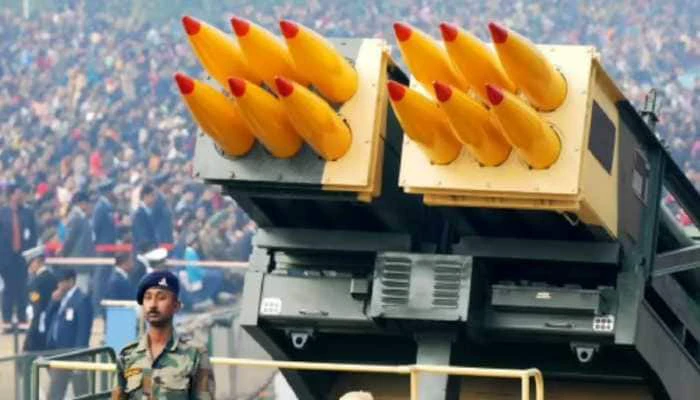New Delhi: Indias long-term artillery modernisation plan is entering a decisive phase, with the Army set to induct two more regiments of the indigenous Pinaka multi-barrel rocket launcher system.
With these additions, the total number of operational Pinaka regiments will rise to 10 by 2026, signaling the gradual replacement of outdated Soviet-era Grad BM-21 systems that have been in service for decades.
Designed by Indias Defence Research and Development Organisation (DRDO), this rocket system has already proven its value in operations along the northern and western borders. Its six regiments are currently active in areas facing China and Pakistan. The addition of two more will further strengthen Indias deep-strike capabilities and reduce dependence on foreign-origin equipment.
Sources in the defense establishment told The New Indian Express that training for the personnel of the upcoming regiments is already underway. Launchers, command posts and support equipment are expected to be delivered by the end of this year. If all goes to plan, the new regiments will be combat-ready by early 2026.
Each regiment is equipped with 18 launchers, capable of delivering massive firepower in seconds. Each Pinaka battery can launch up to 72 rockets in just 44 seconds, saturating an area of nearly 1,000 square meters with precision strikes.
With a maximum range of 38 kilometres at sea level, extended further in mountainous terrain, the system allows the Army to target enemy positions deep inside hostile territory with minimal response time.
Named after Lord Shivas mythological bow, Pinaka has evolved into a cornerstone of India’s indigenous artillery ecosystem. It stands alongside heavy-duty platforms like the Russian-origin Smerch systems and integrates smoothly with Bofors guns, M777 howitzers and upgraded L-70 air defense guns.
Indias move to expand the Pinaka fleet comes with both strategic and operational implications. The Ministry of Defence had signed a Rs 2,580 crore contract in 2020 with Tata Power, Larsen & Toubro and BEML for manufacturing and supplying six regiments worth of launchers, vehicles and support systems.
Two of those six regiments became operational in 2024, while the remaining four are in the pipeline, including the two now under training.
In total, 114 launchers are currently in service across the six active regiments. These are equipped with automated gun aiming and positioning systems (AGAPS) and supported by 330 BEML-supplied vehicles and 45 command posts. The operational experience gained over the last few years has allowed the Army to refine deployment strategies, optimize logistics and increase interoperability with other ground-based firepower assets.
The larger objective is phasing out the Grad BM-21 rocket systems of Soviet origin, which first saw combat during the 1969 Sino-Soviet border conflict. Though reliable, the Grads 1960s-era technology is increasingly unsuited for modern high-precision and high-mobility battlefields.
Pinakas growing presence on India’s frontlines reflects shift in military doctrine one that prioritises speed, indigenous capability and operational independence. As geopolitical tensions remain high along India’s northern borders, the Armys push for advanced and domestically developed artillery systems is likely to remain a cornerstone of its defense preparedness through the next decade.
